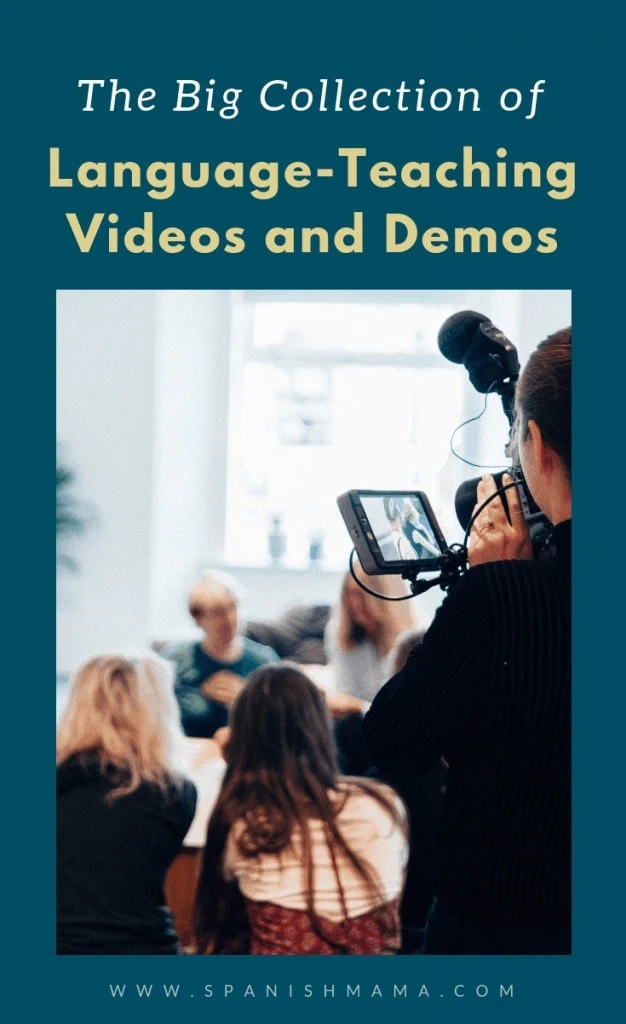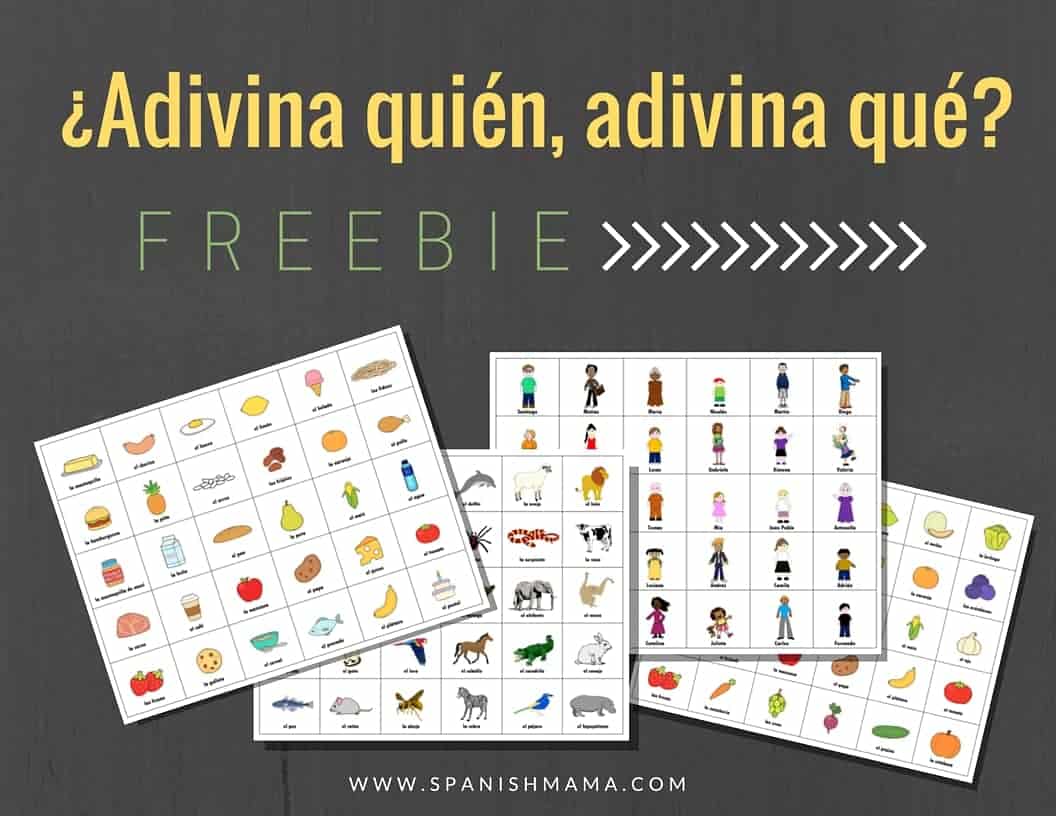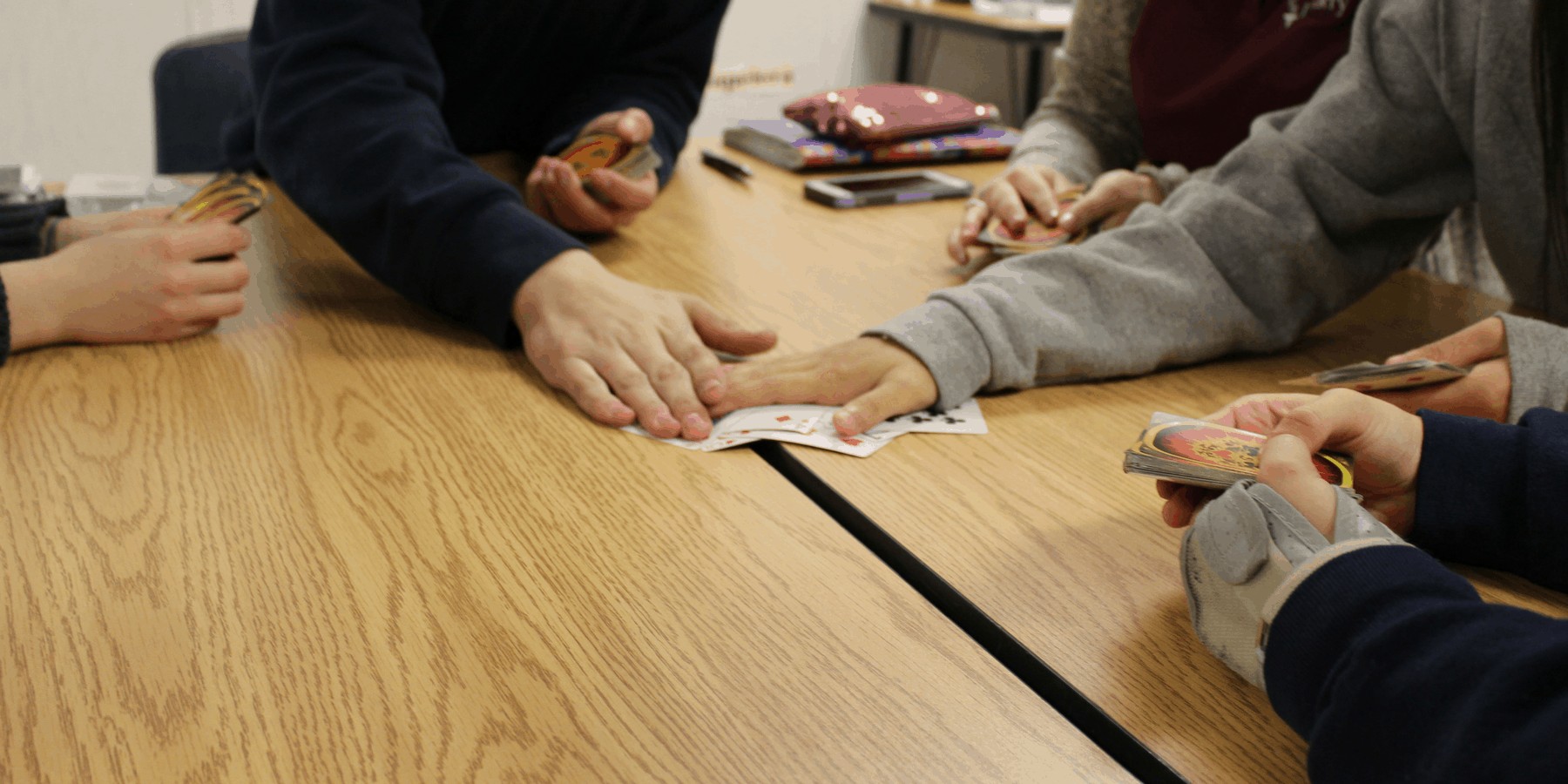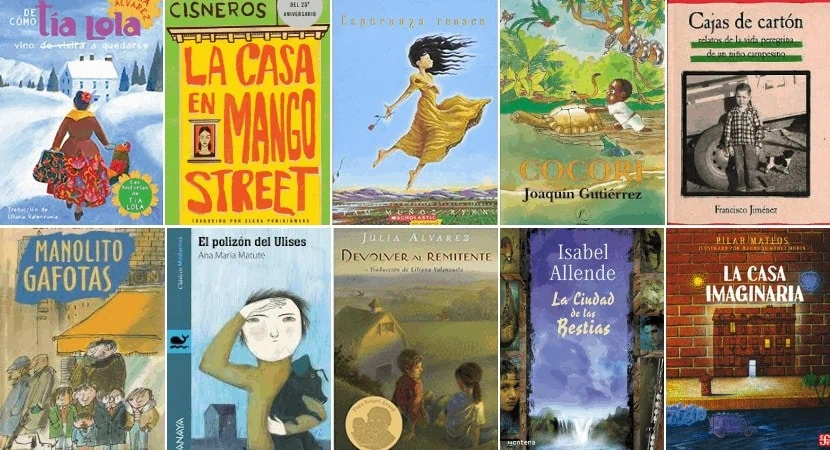Spanish Games for Class You Need To Know About in 2022
Inside: A library of top Spanish games for class, that are fun AND provide quality comprehensible input.
Most of us know by now that games are essential for every language classroom. We get it: games get our students moving, make class fun, promote higher engagement, and create those happy vibes we all want, as teachers.
And don’t believe for one minute that games are “fluff” or a distraction from learning: they can be as integral as stories and music in the language classroom!
“Scientists have recently determined that it takes approximately 400 repetitions to create a new synapse in the brain—unless it is done with play, in which case, it takes between 10 and 20 repetitions!”—Dr. Karyn Purvis, Texas Christian Univeristy
I already have a big collection of Spanish learning games, but today I’m pulling together a general library that focuses on input-heavy games. When we’re teaching to proficiency, through comprehensible input, we always want to maximize our class time and provide lots of input.
This giant collection features some of my favorite Spanish class games over the years, and what games are hot right now in the proficiency-based world. I’ve gathered as many videos as I could find for those of you who love to see ideas in action.
IMPORTANT: I decided to keep the explanations of each game very brief, and link to videos or more detailed explanations. If a game interests you, you can quickly learn more without getting bogged down in long explanations as you scroll.
INPUT-HEAVY GAMES FOR SPANISH CLASS
If I’m missing some must-use games, videos, or demos, please pass them along and let me know about them in the comments. I do my best to credit games where I can, but most of these have been recycled and reinvented so many times over the years it’s difficult to know. Always give me a heads up if a correction is needed!
LISTENING SPANISH GAMES
We’ll start off with generic listening games that work for any level (novice – advanced), with any topic. Keep a few of these in your back pocket, and you’ll always be ready for an extra five minutes or surprise observation. The games here depend mainly on input from the teacher, so you adapt the language to what each class understands.
Don’t forget these oldies but goodies:
- Bingo
- Telephone
- Simon Says
And here are some that require some explanation:
1. WORD CHUNK GAME
Invented by Tina Hardgaden and Ben Slavic, this can be year-long competition between teams. Briefly:
- Divide students into groups of three. Each group chooses a gesture.
- Teacher says a word chunk or full sentence.
- Group decides what it means, raise hands, and cannot discuss further.
- Teacher calls on first group, who does their gesture in unison.
- First group gets a chance to translate chunk and must answer in unison. Points are awarded for correct answers.
Or, pair the game with trashketball and get more details at Totally Comprehensible Latin.
Cyber Profe explains how her classes play.
2. ¿QUÉ ES?/ ¿QUIÉN ES?
I’ve seen many different twists on this, but here’s my version:
- Students brainstorm and write down terms on pieces of paper (people, places, things, characters, etc) OR create your own cards. Stick to proper names or terms in English with lower levels.
- Teacher describes the term on the card without saying the actual name.
- First student to correctly guess the term gets the card.
- Student with the most cards wins.
You can add parameters such as giving a signal before allowing guesses to begin.
Señora Chase demos her version, The ¿Cómo se dice? game.
Here’s another way to play if you need to review vocabulary in Spanish.
Dreaming Spanish demos with guessing animals through descriptions.
3. CHANGE SEATS IF…
This one is fun and doubles as a good brain break if you have the space.
- Students sit in a circle.
- Teacher calls out “switch seats if…,” followed by something relevant to her class (if you’re wearing white socks, if your birthday is in June), in the TL.
- Students for whom the “if” applies must get up and find a new seat.
- You can leave it competitive, or have one less chair than people. The last person will be left without a seat– you can have them do something in the TL (count 1-10, etc.) or do something funny.
Quick and easy demo.
See how Señora Chase does this, with rich input throughout the game
4. EL MARCADOR
I like this one for small groups. Sometimes it can be hard to come up with good games that only require 2-4 players! This is a quick review that works for any topic.
- Put students in pairs, across from each other, with a marker in the middle.
- State something– true or false.
- If it’s false, students should leave the marker alone. (If they touch it: -1 point.)
- If it’s true, first student to grab the marker gets 1 point.
5. POP-UP
This quick quiz game is from Señora Chase and genius because it gets everybody listening closely. See her post for all the helpful details if you want to know more.
- Number the students so everyone has a pair (1-1, 2-2, 3-3, etc.). (Pair similar-leveled students if possible.)
- Line students up across from each other.
- Ask a question or state something in the TL. Then call a number.
- The first student to answer or translate correctly gets a point.
Señora Chase demos the Pop-Up! game.
6. SLAP-IT
Also known as flyswatter when using images on the board, I prefer to play Slap-It with picture cards, as every student is engaged.
- Put students in pairs or groups (2-4 is best).
- Give each group the same set of picture cards, face-up on the table.
- Call out the word, or say a sentence that describes it/uses it.
- First student to slap the card gets to keep it.
- At the end, students with the most cards in each group wins.
7. THE READING GAME
Another genius game from Señora Chase, this one gets students reading texts several times.
- Put students in small groups and give them a text to read.
- The group should work together to make sure everyone understand the whole text.
- Students take turns being the representative for their group, going to the front, and answering questions about the text.
- Students who answer correctly get to draw a card for random points, which keeps the game interesting and competitive to the end.
- Group with the most points wins.
Be sure to check out the full details on The Lucky Reading Game, where Señora Chase has slides to assign points for the deck of cards.
COLLABORATIVE WRITING GAMES
These Spanish games for class require some writing from the students, which is used throughout the game and read by other students. Scaffold as needed by giving prompts, outlines, or even letting students copy phrases from texts you’re using in class. With more advanced students, you can give them more creative freedom!
Most of these games are low-prep or no-prep, perfect for those days when you’re not feeling well. They also work well when your administration or parents are looking for more output and collaboration between students.
8. TWO TRUTHS AND A LIE
You’ve probably played this popular game in English, but it’s a great one for Spanish class too!
- Model first, by writing down two true things and one false thing. Let the class guess which one is false.
- Have the students write their own sentences (and make an answer key).
- Gather the students’ writing, read aloud, and the class guesses the answers.
- You can declare a winner by whomever’s sentences stumped the class the most.
Sarah Breckley has a great version here, that involves more interpersonal communication and a super-creative point system.
9. DRAW, WRITE, PASS
This is another fun party game than translates perfectly to the language classroom.
- Put students in groups of 4-6.
- Students make up or copy a sentence on the top of a paper. Then, directly below it, they illustrate their sentence.
- Students fold the paper so only the drawing is visible. Pass papers to the right.
- Students look at the drawing, and write a sentence that describes it. Pass papers again.
- Students read, and do their best to draw what they read.
- Repeat until everyone has their original papers back. I usually have the groups vote on funniest evolution and most accurate beginning-to-end progression.
It sounds hard to understand, but if you watch the video it’s really simple! Think the game telephone, except through writing and drawing.
10. MEMORY
Memory is a great quiet game that works with any age. If you are working with high school students, here’s a way to take it up a notch with richer language. And for the teacher, it’s no-prep!
- Put students in groups of 4-6 and pass out paper squares.
- Students create matching cards. These could be questions and answers, Spanish and English translations, or sentences and illustrations. (You set the parameters: students should copy text from a novel or story, use info from a certain lesson, etc.)
- Students check cards with teacher when ready. Early finishers do extra cards.
- Then let them play in groups! The activity should be self-monitoring since the students themselves made the cards.
Señora Chase has a way to play this whole-class you might want to check out!
COLLABORATIVE SPEAKING GAMES
These games require some speaking from the students, or create a context for more interpersonal communication. When we are ready for students to produce output, Spanish games for class are a wonderful way to do that.
Although there are lots of games that require students to speak (i.e., get up, find a partner, speak for two minutes, switch), they can sometimes feel artificial. My favorites are activities that naturally require communication in order to advance or win. These games are a more natural context to communicate and negotiate meaning.
11. MAFIA
Mafia is the darling of the CI community right now, and for good reason: it’s SO engaging. It can last an entire period, so it’s perfect for those days when you have an odd day before spring break, or when half the class is out sick. The only catch? It takes a while to understand and explain. I’ll describe it briefly, but checking out the attached videos and links should help you get this one.
- Play whole class. You are the director of this role-playing game.
- The gist: the mafia is trying to eliminate all the citizens, especially the police. The police want to save the town. The citizens want to survive and eliminate the mafia.
- Tell the class to “sleep” and secretly assign roles to the class: mafia members, citizens, police, doctor. (See Martina Bex’s printable for this and to understand the role of police and doctor.)
- Class sleeps, the mafia choose their first victim to eliminate. That student is out.
- Tell the class to wake up. Make up an entertaining/interesting narrative about the poor victim’s demise.
- This is where it gets fun: after each “murder,” you allow a few accusations. If a student accuses another students as being mafia, they must state why. The accused get the chance to defend themselves. Everyone still in the game votes on who they think is mafia, and the person with the most votes is out.
- Class sleeps again, the mafia eliminates another player, and another round of accusations/defenses begins.
- Game is over when all Mafia has been eliminated OR all citizens/police/dr. have been eliminated.
Whew. There’s more nuance than I included, but hopefully you get the idea. My students LOVE THIS GAME, and there are endless twists.
- Martina Bex has a thorough explanation with printables.
- Jeremy Jordan has a great Google Slides you can use.
- Call it “Unicornio Malo” and use it with younger students, with this post from Profe Peplinski.
Good Mafia explanation from an ESL context
Setting up Mafia with La Maestra Loca.
Setting up Unicornio Malo for the first time, with La Maestra Loca.
Full game of Mafia, with a small group
12. 20 QUESTIONS
This game is a nice way to let the students communicate with questions. The teacher can facilitate and re-state as needed to make sure students are getting quality input.
- Choose one student to sit in front of the class and choose a person/thing/animal, whatever you allow.
- The class asks yes or no question to guess the answer.
- More than 20 questions- student wins, class guess in less than 20- class wins.
You can switch this up by taping a famous character or person onto students’ back and they have to walk around asking each other questions, to figure out who they are.
Alternatively, you could let the students tape something onto your back (maybe pick a trusted student to be the appropriateness judge), and you ask the class yes or no questions to figure it out.
Dreaming Spanish demos a guess-the-character game.
Señora Chase shows us 20 Questions in a whole-class setting.
13. GUESS WHO?
Guess Who is really similar to 20 Questions, except played with a board. If you make your own board, you can put anything on it- people, objects, animals, etc.
- Put students in partners, each with matching boards.
- Each player secretly chooses one image/square.
- Players take turns asking yes or no questions, to eliminate possible squares.
- First player to correctly guess the opponents’ selection wins.
14. CHARADES
Charades doesn’t involved much speaking, but it is lower on the input-scale and students have to speak to answer. Charades is especially good to use if you do a lot of TPR, and have lots of motions the kids all recognize. There are LOTS of version!
- Divide the class in 2 or 3 teams and prep pieces of paper with words or phrases.
- Bring a representative from each team to the front.
- Each team takes a turn guess terms. Give the representative 30 seconds, for example, to pick papers and act out as many terms as possible.
- When the team guesses correctly, he/she picks another paper. Each paper counts as a point.
- The next team gets a turn.
You can reverse this by having the teams act the phrases out, and the representative must guess. Another option is to have one actor all the teams watch, and the first team to write the answer on a whiteboard and show it gets a point.
See how Sarah Breckley plays reverse charades.
Up the target language with a combo of taboo and charades!
15. MANO NERVIOSA
It’s common for students to be able to mindlessly chant lower numbers, but not recognize them out of context. Fix that with Mano Nerviosa! Is this game input-heavy? Not exactly, but it is very fun and effective.
- Put students in groups of 3-6 and give decks of cards.
- Students begin laying down cards in the center, in a circle. They recite numbers 1-14, one-by-one.
- If the number said matches the number laid, the first person to slap the cards in the center gets them all.
See the video to understand the game in a snap, or to show your students how to play.
Like it? Pin it!
SPANISH TEACHER VIDEOS AND DEMOS









Great ideas! Mafia is an awesome filler that I use with my tiny classes. We only have two mafia and a nurse. Lesson learned. Whoever dies has to sleep with everyone. They give it away!
Mans nerviosas a fabulous. Really good for a quick filler activity my ids as or it all the time!
You are AWESOME. Thank you for always sharing your brilliant and creative activities.
than you very much for all your ideas and your energy and enthusiasm. Great!!!!